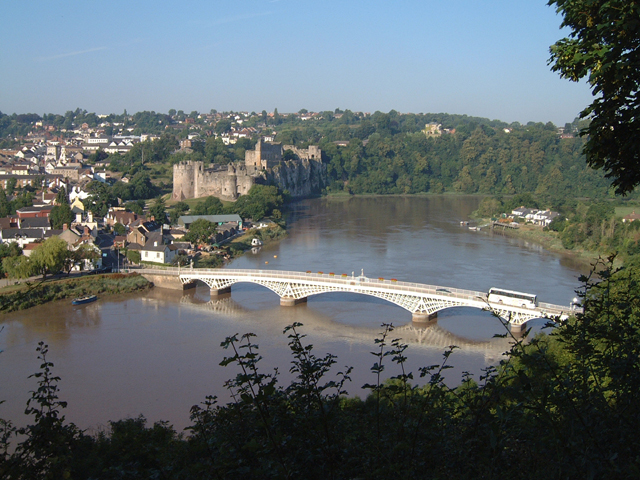|
Dulas, Irfon
Dulas is a left-bank tributary of the Afon Irfon, itself a tributary of the River Wye. It rises on the southeastern slopes of the Elenydd and runs southeast to join the Irfon at Garth. The river is bridged by both the B4358 and the A483 The A483, officially described as the Swansea to Manchester Trunk Road, although now ending in Chester, is a major road in the United Kingdom. It runs from Swansea in Wales to Chester in England via Llandovery, Llandrindod Wells, Oswestry and W ... roads.Ordnance Survey 1:50,000 scale Landranger map sheet 147 ''Elan Valley & Builth Wells area'' References Categories Rivers of Powys {{Wales-river-stub ... [...More Info...] [...Related Items...] OR: [Wikipedia] [Google] [Baidu] |
Afon Irfon
Afon Irfon (the River Irfon) is a river in Powys, Wales. It flows from the upper slopes of Bryn Garw in the Cambrian Mountains, through the Abergwesyn Valley, past the Nant Irfon National Nature Reserve in the hills above the village of Abergwesyn, and through Llanwrtyd Wells to its confluence with the River Wye at Builth Wells. The source of the Irfon is in the so-called ' Desert of Wales'. Afon Irfon is the listed name of the Site of Special Scientific Interest in the upper reaches of the river Irfon Powys, Wales. Description From its source at AMSL on the upper slopes of Bryn Garw in the Cambrian Mountains the Irfon flows southwards past the foot of the Devil's Staircase, along the Abergwesyn Valley, through the scenic Camddwr Bleiddiad (Wolves' Gorge), and into the Wolves' Pool. It then flows past a forest of sessile oak ''(Quercus petraea)'' to join the Afon Gwesyn at Abergwyesn where it passes beneath the Irfon Forest and the Nant Irfon National Nature Reserve toward ... [...More Info...] [...Related Items...] OR: [Wikipedia] [Google] [Baidu] |
River Wye
The River Wye (; ) is the Longest rivers of the United Kingdom, fourth-longest river in the UK, stretching some from its source on Plynlimon in mid Wales to the Severn Estuary. The lower reaches of the river forms part of Wales-England border, the border between England and Wales. The Wye Valley (lower part) is designated a National Landscape (formerly an Area of Outstanding Natural Beauty). The Wye is important for nature conservation and recreation, but is affected by pollution. Etymology The meaning of the river's name is not clear. Possibly the earliest reference to the name is ''Guoy'' in Nennius' early 9th Century and the modern Welsh language, Welsh name is , meaning ''wet'' or ''liquid''. The Wye was much later given a Latin name, , an adjective meaning 'wandering'. The Tithe maps, Tithe map references a Vagas Field in both Whitchurch and Chepstow. Philologists such as Edward Lye and Joseph Bosworth in the 18th and early 19th centuries suggested an Old English deri ... [...More Info...] [...Related Items...] OR: [Wikipedia] [Google] [Baidu] |
Elenydd
The Elenydd () is an upland area of Mid Wales, extending across parts of northern and eastern Ceredigion and Powys between Aberystwyth and Rhayader. Elenydd is also a name given to the medieval commote of Cwmwd Deuddwr which covered approximately the same area. The area is an upland plateau of moorland and rough grazing within the Cambrian Mountains, source of the rivers Elan, Severn, Teifi, Towy and Wye. Elenydd is generally interpreted to mean the upland area between Pumlumon in the north and Mynydd Epynt in the south. The term " Desert of Wales" is sometimes applied to this or a wider area. Much of Elenydd is open land with public access, following the Countryside and Rights of Way Act 2000, widely known as the "CROW Act". Specific areas within Elenydd are designated as being of nature conservation importance. Etymology The name means the "area adjoining the Elan", which river name probably arises from Welsh ''elain'', meaning fawn or hind; -''ydd'' is a suffix deno ... [...More Info...] [...Related Items...] OR: [Wikipedia] [Google] [Baidu] |
Garth, Powys
Garth is a village in Powys, mid Wales, in the community of Treflys. It lies on the A483 road between Builth Wells and Beulah at the point where the B4519 joins it from the south. The River Irfon flows to the south of the village. Garth railway station is a request station on the Heart of Wales Line. Notable residents Garth was associated with the Gwynne family, which included Marmaduke Gwynne (1691–1769) and his daughter Sarah (1726–1822) who were early converts to Methodism. Sarah married Charles Wesley Charles Wesley (18 December 1707 – 29 March 1788) was an English Anglican cleric and a principal leader of the Methodist movement. Wesley was a prolific hymnwriter who wrote over 6,500 hymns during his lifetime. His works include "And Can It ... (1707–1788) at the nearby Llanlleonfel church in 1749. [...More Info...] [...Related Items...] OR: [Wikipedia] [Google] [Baidu] |
A483
The A483, officially described as the Swansea to Manchester Trunk Road, although now ending in Chester, is a major road in the United Kingdom. It runs from Swansea in Wales to Chester in England via Llandovery, Llandrindod Wells, Oswestry and Wrexham, a distance of around . Route description Swansea The A483 begins at the M4 motorway junction 42, just east of Swansea. It travels west along the Crymlyn Burrows#Fabian Way, Fabian Way towards Swansea city centre, where it turns to a northwesterly direction. It meets the M4 again at junction 47 at Penllergaer, after which it Concurrency (road), multiplexes with the A48 road, A48 along Swansea Road, Bryntirion Road and Bolgoed Road to Pontarddulais. Carmarthenshire After Pontarddulais, the route continues along Heol Fforest and Carmarthen Road. It diverges from the A48 at the M4 junction 49, turning northeast towards Ammanford and then north towards Llandeilo. At Llandeilo it joins the A40 road, A40, then multiplexes with this route ... [...More Info...] [...Related Items...] OR: [Wikipedia] [Google] [Baidu] |

